Puppy Play Styles
Play is an important social activity. Through play puppies like children learn how to act and behave appropriately with other dogs. We have put this leaflet together in order to help you understand what dog play consists of and how best to ensure your puppy learns to play appropriately.
Through play puppies experiment with different noises, postures and ways of interacting with other puppies. All of this is entirely natural and healthy, although it may sound and appear rough and aggressive to us humans.
Below are some examples of play and play styles so you can see how your puppy is developing his or her ability to interact successfully with other dogs. Please bear in mind that this is not an exhaustive list and your puppy may not perform all of these behaviours.
What we look for in appropriate play is lots of role swapping – i.e. one puppy chases, then they swap and the chaser becomes the chase and so on we also look for exaggerated movements. We will always be on hand to advise you what is and what isn’t appropriate. If play is no longer appropriate and fair we don’t reprimand or shout at the puppies. We will instruct you to calmly and quietly remove one or both offending puppies from the play, giving them a “time out”. Once Puppy has calmed down we allow him or her to re-enter the play session. This will allow puppy to learn self-control.
The Play Bow – this is an invitation to play
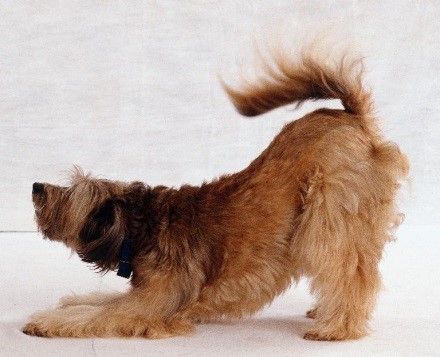
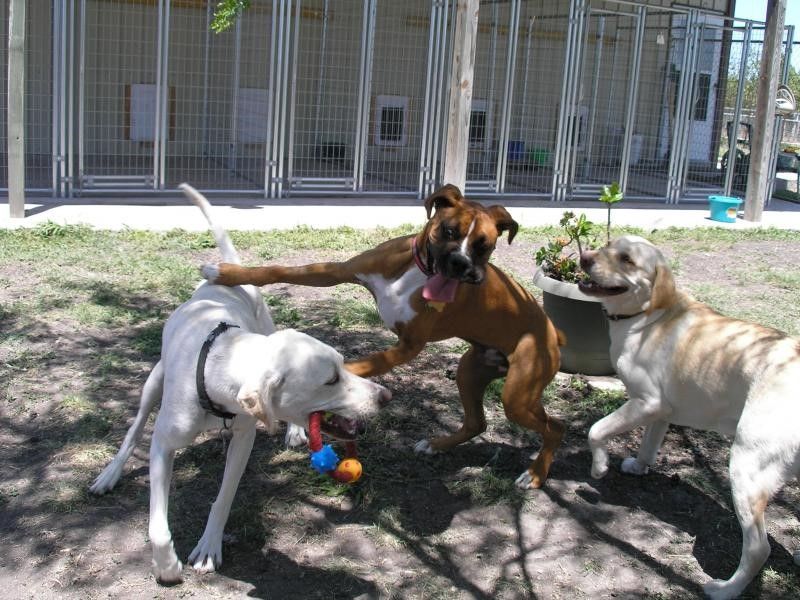
Exaggerated Movements – often repeated movements, a clear sign to another dog that the moving dog intends to play (below)
Sideways Movements – Sideways movements as opposed to forward movements indicate the intention to play instead of attack
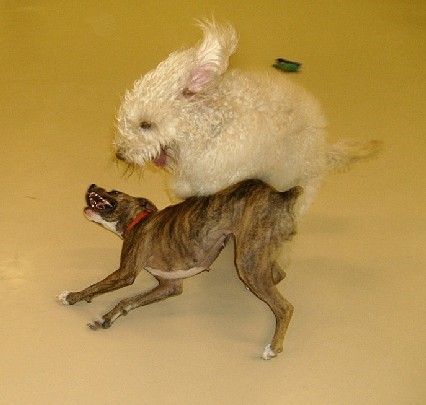
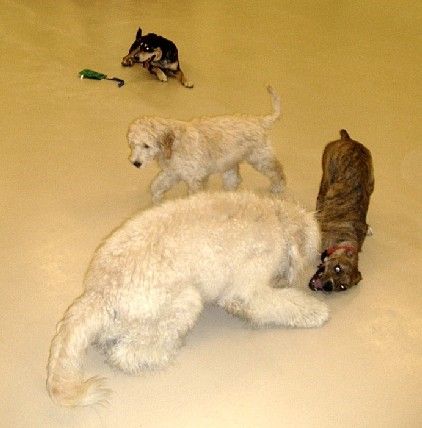
Long Slow Relaxed Tail Wagging and Relaxed Bodies – Show a relaxed and happy state although the dogs may be moving around quickly their bodies should be relaxed.
Play Styles – Different personalities and different breeds like to play in different ways – all are entirely natural and fine as long as the dogs are both enjoying the play and are showing appropriate postures.
Chasing - exactly what it says on the tin – fun for both parties
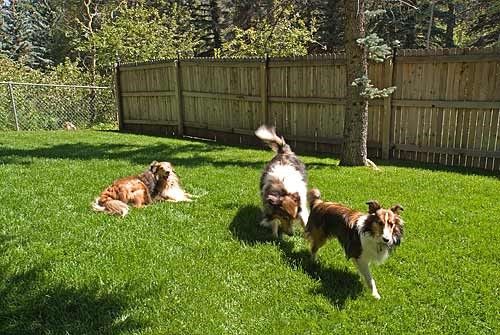
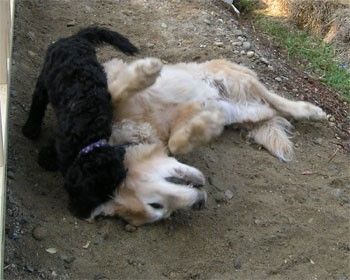
Neck Biting/ Teeth Fencing – Puppies are practicing wrestling and bringing down prey. They will gently bite each other’s faces necks and shoulders, and practice their “war faces” by snarling, face pulling and sometimes vocalising. This is what most owners find worrying – don’t worry it’s a normal play style.
Cat Play – often seen in smaller breeds, both parties engage in batting each other’s faces and bodies.
Body Slamming – A favorite of larger breeds, dogs will run and slam into one another in a wrestling like motion.
All of the above play can be mixed and matched and you will probably see a wide variety of the above play styles during the course of your puppy’s social education. Remember as long as both parties are happy – play is appropriate!
Problems can occur as many pups have preferred play styles and if the two don’t match then pups can be upset. For this reason, it is important your puppy mixes with as many different dogs/pups as possible so they can learn the different play styles and how to adapt their styles to suit the dog they are playing with.
